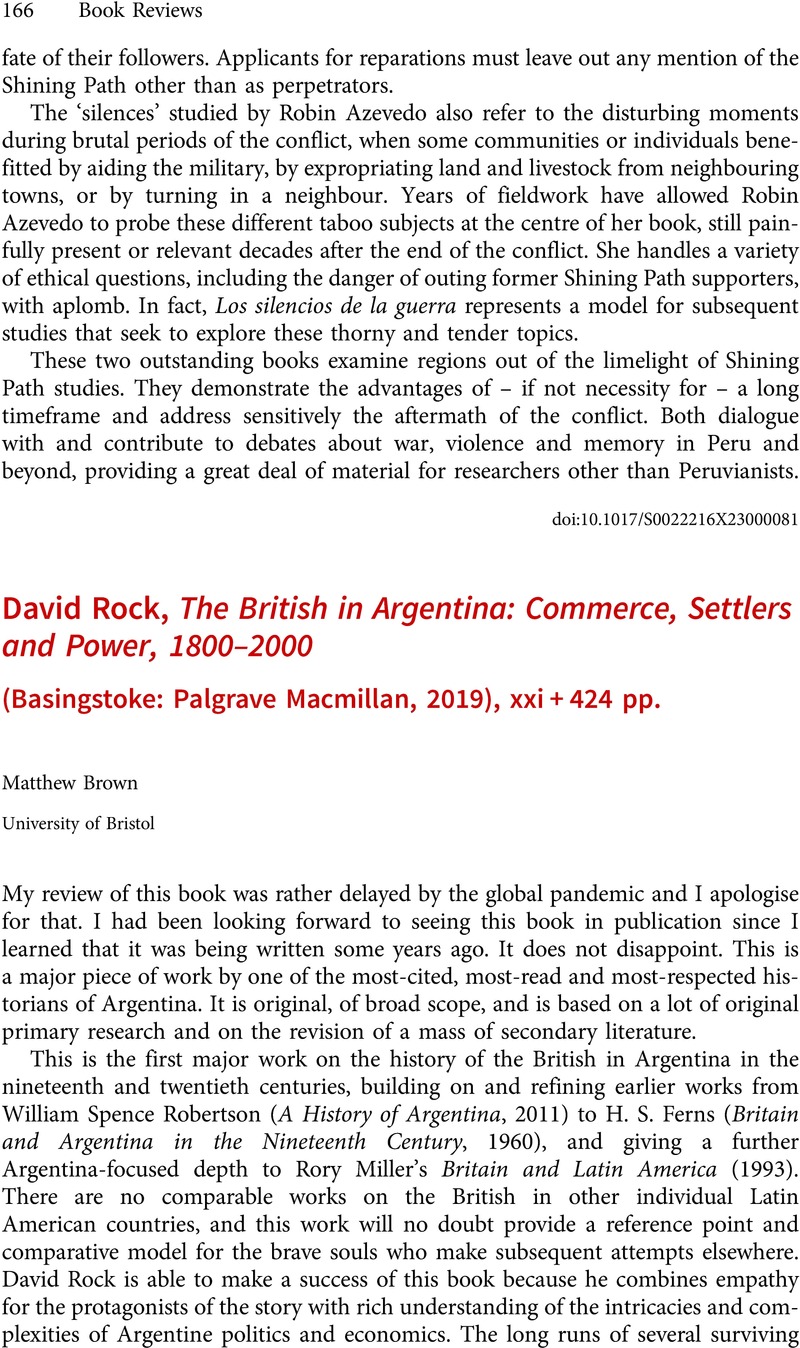No CrossRef data available.
Article contents
David Rock, The British in Argentina: Commerce, Settlers and Power, 1800–2000 (Basingstoke: Palgrave Macmillan, 2019), xxi + 424 pp.
Review products
David Rock, The British in Argentina: Commerce, Settlers and Power, 1800–2000 (Basingstoke: Palgrave Macmillan, 2019), xxi + 424 pp.
Published online by Cambridge University Press: 17 March 2023
Abstract
An abstract is not available for this content so a preview has been provided. Please use the Get access link above for information on how to access this content.

- Type
- Reviews
- Information
- Copyright
- Copyright © The Author(s), 2023. Published by Cambridge University Press



